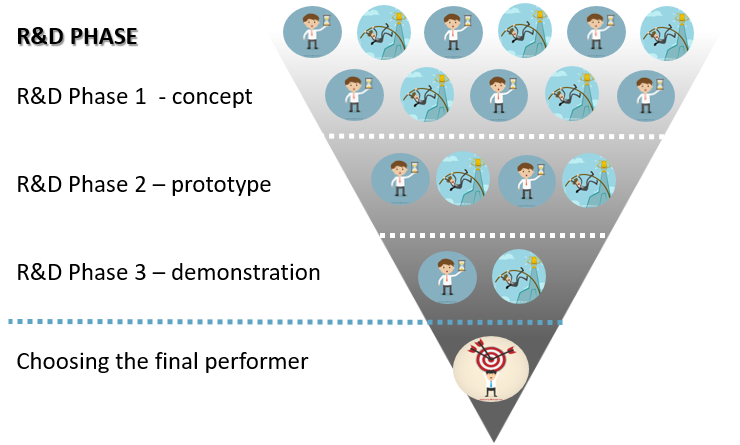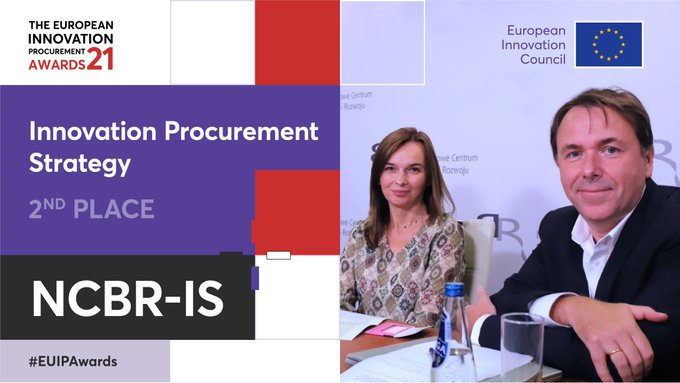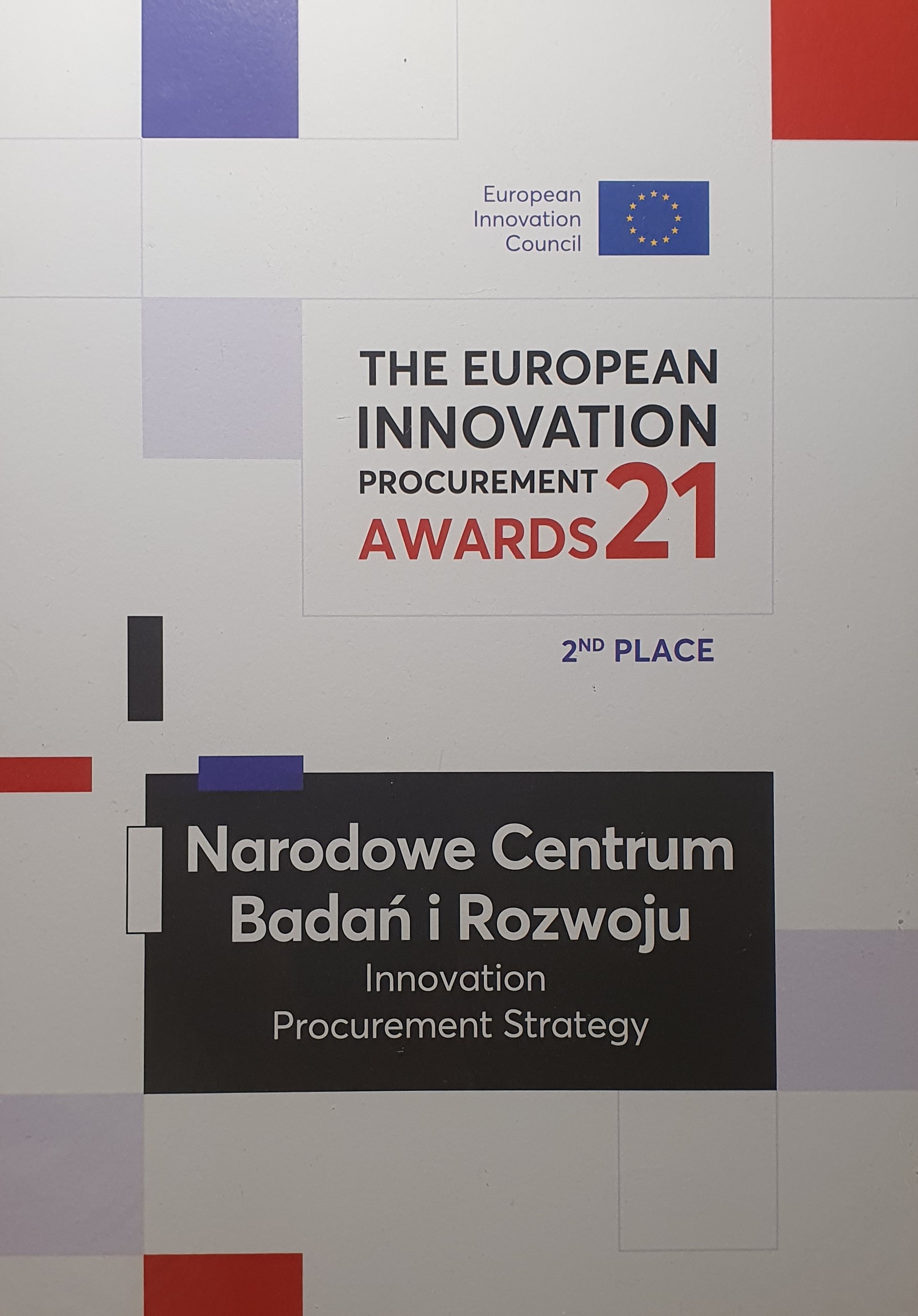See our projects!
The National Centre for Research and Development (NCBR) supports the implementation of European Green Deal by launching several research projects carried out as pre-commercial procurements. They all are aimed at developing new solutions and technologies in research and development (R&D) that support the achievement of the objectives of the European Green Deal.

Green Deal and innovative NCBR projects
In December 2019, the European Commission presented the assumptions of European Green Deal, which are the basis for initiatives for achieving climate neutrality by the European Union, understood as zero net greenhouse gases emissions, by 2050. Priority actions, that the EU plans to undertake in order to become neutral in terms of climate, include i.e. transition to clean, affordable and safe energy, transformation towards a circular economy, energy-efficient and resource-efficient construction, sustainable mobility, as well as broadly understood environmental protection with the reduction of air, water and soil pollution and improved waste management at the fore.
The National Centre for Research and Development (NCBR) supports the implementation of European Green Deal by launching several research projects carried out as pre-commercial procurements. They all are aimed at developing new solutions and technologies in research and development (R&D) that support the achievement of the objectives of the European Green Deal.
Projects are carried out in the form of innovative public procurement, as pre-commercial procurement (PCP). The contracting authority is NCBR (Purchaser), which defines a research and development problem resulting from the real needs of the Polish economy, and entities interested in solving this problem participate in the process, the end result of which is the implementation of the developed solution, not available on the market today.
It should be emphasized that when preparing assumptions for projects, NCBR conducts extensive market consultations with potential contractors and stakeholders, which allows for in-depth recognition of specific needs, currently offered technologies in a given area, as well as the feasibility of a given solution. Based on this a tender is opened. The NCBR uses the so-called model of the "funnel", according to which the Purchaser selects several contractors with whom they sign contracts for the projects. Contractors carry out R&D works by developing their solutions, and then submit their results to NCBR for evaluation. On this basis, NCBR selects contractors for the next stages of the project (funnel), gradually reducing the number of contractors, and at the same time selecting the best solutions. With each subsequent stage, the level of technological readiness of the developed solution increases. The contractor admitted to the implementation of the last stage develops a full-scale solution (solution demonstrator).
Each of the 9 projects described below, launched by the NCBR, give a strong impulse to create innovative technologies with features that exceed the solutions currently available on the market. Research challenges have been defined to stimulate the development of technologies that have a chance to gain wide market acceptance, and then through mass commercialization has a chance to become a Polish specialty.
PCP projects and goals
Process and energy efficient building construction
The aim of the project is to develop innovative technologies: 2D (prefabricated technology) and 3D (modular technology) of the construction of a single-family and multi-family buildings. These new technologies will allow to construct cost-effective buildings with a positive or zero energy balance, a low carbon footprint due to the use of recycled materials and an efficient use of rainwater for utility purposes. The direct result of the project will constitute 3 demonstration buildings: a single-family building, a multi-family building and a building for elderly people.
Innovative biomethane plant
The project objective is to develop an agricultural biogas plant technology capable for using a wide range of waste substrates. The technology is expected to be highly efficient, odourless and energy self-sufficient. The main product of such biogas plant will be high-quality biomethane, which could be fed into the gas distribution network, or compressed and then used for transportation purposes. What is more, the post-fermented mass will be suitable for agriculture and horticulture uses as an organic fertilizer. As a technology demonstrator, a full-scale biometan treatment plant will be constructed.
Sewage treatment plant of the future
The aim of the project is to develop an innovative technology of wastewater treatment, ensuring the renewal and recovery of water and its further use in agriculture, industry or urban areas. The technology will allow to recover biogenic elements contained in wastewater, in accordance with the principles of a circular economy, while removing micro-pollutants from wastewater, such as pharmaceuticals, pesticides, heavy metals and microplastics as well. In addition, the developed technology will ensure effective management of the sewage sludge in agriculture and in urban areas. As a technology demonstrator, a full-scale sewage treatment plant will be constructed.
Heating plant of the future
The Project objective is to develop an innovative solution enabling the modernization of the existing domestic heating systems based on fossil fuels. The developed solution will constitute a cost and energy efficient system covering the production, processing and storage of energy for heating purposes with the use of renewable energy sources. It will enable repeated adaptation in various housing estates. For the purposes of the demonstration, the developed heating system will be established as the confirmation of market feasibility of a system, which supplies heat from renewable sources with a minimum share of 80% RES, maintaining an acceptable price for customers.
Combined heat and power plant in the local energy system
The aim of the project is to develop an innovative solution for a transformation of the existing domestic heating systems basing on fossil fuels into complex system of generating and storing energy for heating purposes combined with cogeneration basing on renewable energy sources. The developed system will allow to stabilize and self-balance the local power system.
For the purposes of the demonstration a combined heat and power plant will be constructed in the project as a confirmation of its feasibility study as a system which supplies heat and electricity from renewable sources with a minimum share of 80% RES, while maintaining an acceptable price for customers.
Electric power storage
The aim of the project is to develop a technology of innovative galvanic cells (batteries) and an electric power storage system for household and industrial applications. The developed galvanic cells will be recyclable and will ensure high energy density, long battery life-cycle, and moreover, their production will be based as much as possible on domestic raw materials. The systems based on developed galvanic cells will ensure high efficiency and cost-effectiveness of the power electricity storage. For a technology demonstration two products will be constructed and presented in the project: a demonstration battery and a demonstration electric power storage system.
Heat and cold storage
The Project objective is to develop innovative storage systems (both heat and cold storage) for household and industrial applications. The systems will be based on effective technologies of periodic storage of maximal obtainable energy at a time supplied from renewable energy sources and the distribution of the energy according to the needs of the building. The developed systems will be demonstrated in two project streams: in a single-family building and in an office building. The systems will be highly efficient, ensuring minimal energy losses and high stability over time. Moreover, they will be optimized for every specific application. Such systems will lead to the development of technologies supporting zero-emission buildings and industry due to the possibility of periodic (daily, weekly, seasonal) energy storage.
Micro-retention systems
The objective of the project is to develop innovative micro-retention system for the storage, conditioning and usage of rainwater. The developed system will lead to the reduction of water usage from the water supply network through efficient rainwater management. At the same time, this will lead to the reduction of sewage supply to the sewage network. The developed solutions will be demonstrated in a real application. The project results will have a profound impact on the storage and retention of torrential rains and will help to minimize the drought and flood effects in Poland.
HVAC for schools and houses
The aim of the project is to develop innovative HVAC systems for existing residential buildings and schools. The developed solution will ensure regulation of the supply air temperature and high air quality by reducing the level of CO2 concentration and microbiological pollutants, filtration of PM2.5 and PM10 dust pollutants. Furthermore, these innovative systems will allow to remove an excessive moisture and heat. The developed systems will be implemented during the project in an existing residential building and school for demonstration purposes.
Innovation Sapper
Basing on experiences gained during preparation and implementation of 9 PCP Projects (PCP Projects) supporting European Green Deal, NCBR developed “Innovation Sapper” methodology for conducting innovative PCP projects in the area of green technologies. “Innovation Sapper” includes both the legal framework of public procurement and state aid, the possibility of multiple use of the methodology in a wide range of project scopes, as well as the possibility of cooperation with public and private entities as a project stakeholders. Due to these assumptions, “Innovation Sapper” ensures a contracting authority (a Purchaser) flexibility in the implementation of projects (the possibility of adapting to i.e. the specificity of technology, suppliers or services on the market), as well as transparency for the market and potential contractors.
It is worth emphasizing that according to "Innovation Sapper" methodology, it is the Purchaser who define a specific social or economic need and then indicate a research challenge as a subject of an innovative project for which contractors seek for solution during research and development process. However, the Purchaser does not specify measures necessary to develop a solution or detailed technical specifications - this task belongs to the contractors. The Purchaser define only necessary functionalities or minimum parameters, which are the basis for contractors to compete with each other. Therefore, „Innovation Sapper” as a methodology allows to obtain the best innovative solutions.
In November 2021, the National Centre for Research and Development’s "Innovation Sapper" strategy was awarded in the first edition of the European Innovation Procurement Awards (EUIPA), by the European Innovation Council under Horizon Europe.
Projects: Process and energy efficient building construction, Innovative biomethane plant, Sewage treatment plant of the future, Electric power storage, Heat and cold storage, Micro-retention systems, HVAC for schools and houses, are conducted as a part of the non-competitive project entitled Raising the level of innovation in the economy by implementing research projects as part of an innovative public procurement procedure in order to support the implementation of the European Green Deal strategy (under sub-measure 4.1.3 Innovative research management methods of the Intelligent Development Operational Program).
Projects: Heating plant of the future and Combined heat and power plant of the future are co-funded from the European Regional Development Fund under sub-measure 4.1.3 Innovative methods of research management of the Smart Growth Operational Program 2014-2020, under the project entitled Raising the level of innovation in the economy by implementing a new model of financing breakthrough research projects.



